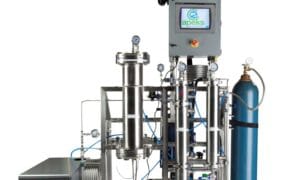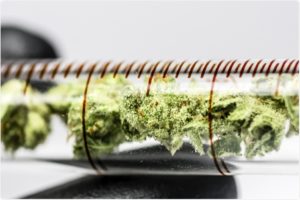 Cannabis extraction is a process that comes with warning labels and safety risks. Extraction of cannabis is a simple process, which people have used for centuries. There are many records of people using cannabis tea, hash, or tinctures in ancient times. There are two (2) main groups of cannabis extracts:
Cannabis extraction is a process that comes with warning labels and safety risks. Extraction of cannabis is a simple process, which people have used for centuries. There are many records of people using cannabis tea, hash, or tinctures in ancient times. There are two (2) main groups of cannabis extracts:
- Solvent Extracts: These are produced with no foreign substances, except water (which technically is a solvent), however, these extracts are not considered as “solvent-based”. The most frequently used solvents are alcohol, butane, and propane. CO2 is not a solvent, even though methods using CO2 are considered solvent based too.
- Solventless Extracts: As the name says, when you produce solventless cannabis extract you don’t use any chemical solvent. All you need is water, heat, pressure, and a sieve.
With the rising demand for cannabis products, technologies used for extracts are becoming more and more sophisticated. Legalization has opened the door to many innovative ideas and methods to make different concentrates, and producers are always finding new solvents to get the very best from cannabis.
However, it starts to become a little riskier to make and use extracts when one doesn’t have the necessary information. Firstly, the chemicals can explode. Secondly, the residual solvent can appear in the final cannabis extract, which is not desirable and can be dangerous to consume. The surge in cannabis industry entrepreneurs brings a host of newcomers regularly and includes Do It Yourself (DIY) members.
 Therefore, it benefits anyone working with the extraction process to stay on top of environmental safety concerns and Occupational Safety and Health Administration (OSHA) training regulations that are specifically outlined in the original manufactures documentation and the municipal building codes, exposure to CO2, etc.
Therefore, it benefits anyone working with the extraction process to stay on top of environmental safety concerns and Occupational Safety and Health Administration (OSHA) training regulations that are specifically outlined in the original manufactures documentation and the municipal building codes, exposure to CO2, etc.
Extraction opens cannabis extraction workers up to carbon dioxide poisoning. Precautions should be taken to keep potentially fatal invisible gas contained. Emergency relief valve piping should always be placed outside, and never indoors.
Poisonous gas should be guided safely away from areas containing people and pets. In addition to proper ventilation, invest in OSHA-regulated CO2 monitors. The immediately dangerous to Life Limit of 50,000 parts-per-million (PPM) follows well after once a warning sound when levels reach the OSHA-recommended 5,000 PPM.
Fire
The extraction process involves liquids and gases which are often flammable. Without proper ventilation and venting, the potential for fire increases. Home-work areas and commercial facilities should be well scrutinized to lessen the chance of chemical fires.
Harmful Vapors
For obvious reasons, it is important to limit the intake of harmful vapors exposed during extraction. Securing proper venting equipment and body protectants and accessories including face masks can help limit direct exposure.
Hearing Loss
Hearing loss should be a concern for those working in extraction facilities. The equipment used during extraction is loud and noise-canceling earplugs are recommended.
Cannabis Dust
Cannabis dust accumulates and poses a threat to the respiratory system. To avoid contamination, install point-of-source ventilation. NIOSH-approved N95 disposable respirators can be required to reduce exposure.
Safety Checks
Keeping an updated safety checklist, monitoring commercial facilities and homework areas for potential danger, and purchasing the necessary safety equipment for safer work procedures. Everyday items like face masks and goggles can keep accidents at bay.
Admittedly, this list reads like a chemistry safety class. It is just that. The cannabis industry runs like other businesses and safety measures should be taken seriously. Carbon monoxide, fire, hearing loss, cannabis dust, and vapor exposure, all present potential safety hazards during cannabis extraction.
Let us know what you think.




Responses